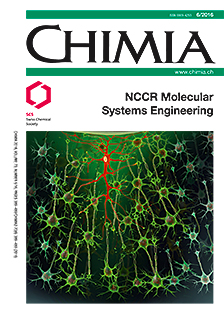Nucleocytoplasmic Transport: A Paradigm for Molecular Logistics in Artificial Systems
DOI:
https://doi.org/10.2533/chimia.2016.413Keywords:
Artificial nuclei, Biomimetics, Macromolecular trafficking, Nuclear pore complex, ProteopolymersomesAbstract
Artificial organelles, molecular factories and nanoreactors are membrane-bound systems envisaged to exhibit cell-like functionality. These constitute liposomes, polymersomes or hybrid lipo-polymersomes that display different membrane-spanning channels and/or enclose molecular modules. To achieve more complex functionality, an artificial organelle should ideally sustain a continuous influx of essential macromolecular modules (i.e. cargoes) and metabolites against an outflow of reaction products. This would benefit from the incorporation of selective nanopores as well as specific trafficking factors that facilitate cargo selectivity, translocation efficiency, and directionality. Towards this goal, we describe how proteinaceous cargoes are transported between the nucleus and cytoplasm by nuclear pore complexes and the biological trafficking machinery in living cells (i.e. nucleocytoplasmic transport). On this basis, we discuss how biomimetic control may be implemented to selectively import, compartmentalize and accumulate diverse macromolecular modules against concentration gradients in artificial organelles.Downloads
Published
2016-06-29
Issue
Section
Scientific Articles
License
Copyright (c) 2016 Swiss Chemical Society

This work is licensed under a Creative Commons Attribution-NonCommercial 4.0 International License.
How to Cite
[1]
Chimia 2016, 70, 413, DOI: 10.2533/chimia.2016.413.







